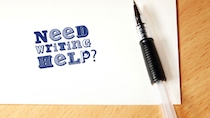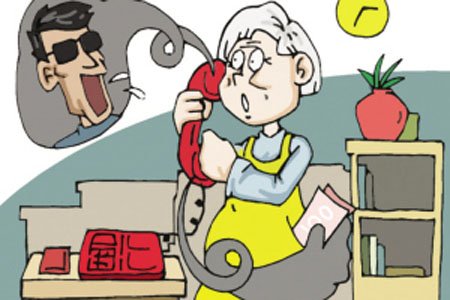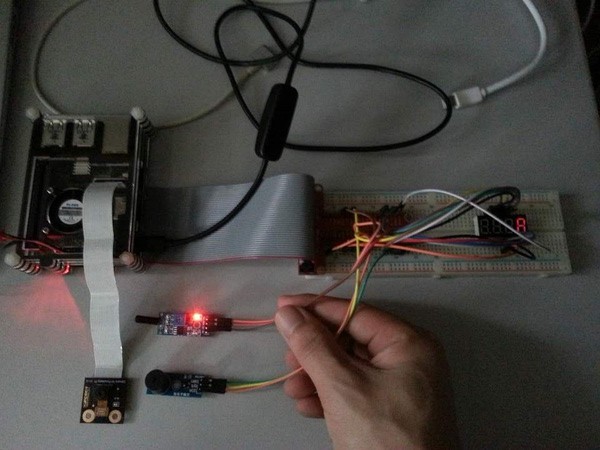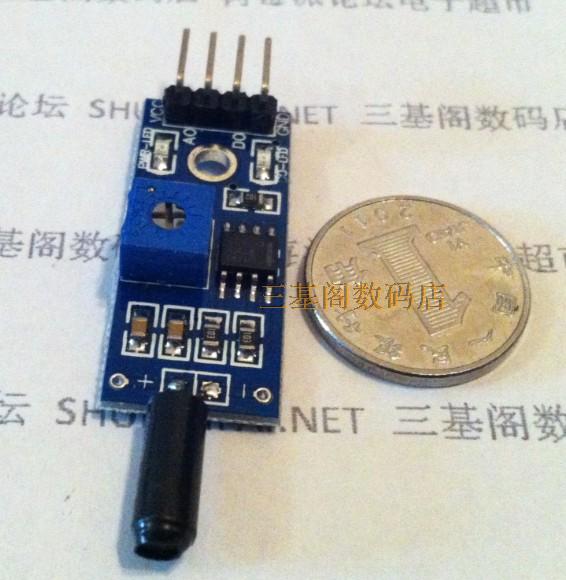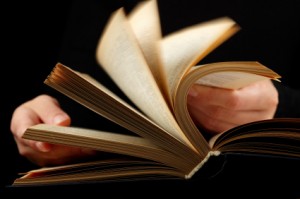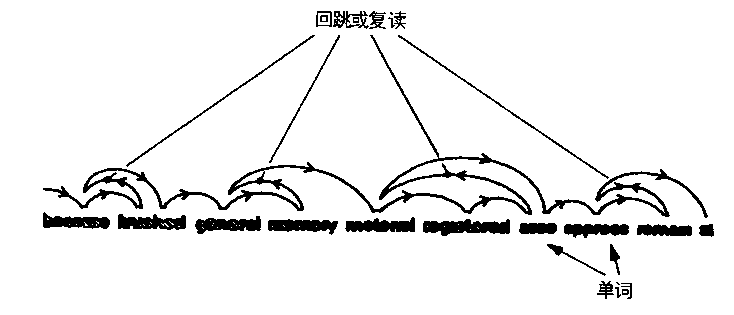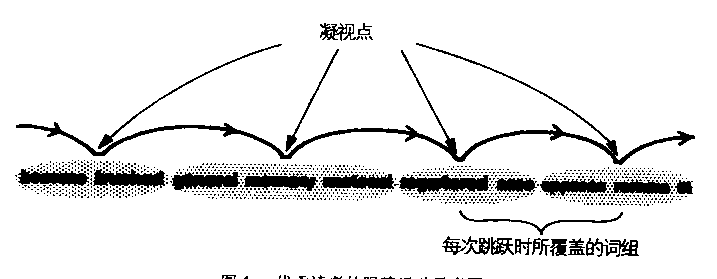sedgehead是美国的一位生物学家,学过八年的中文,现在是全职的自由作家。此人非常热心,在lang-8上经常帮助别人修改英文写作,也帮我改过两次,事无巨细,均细心指出。由于经常需要重复纠正一些错误,所以他整理了一些常见错误,发表在自己的博客上。以后再见到这个list中的错误,他就会告诉别人index让他们自己去查看。我把这个常见错误列表整理转载至我自己的博客上。
NEW INDEX (starting on July 4, 2015):
- Active / passive verbs;
- A lot;
- And (to start a sentence);
- And (as a conjunction);
- Appositives;
- Because;
- Besides / Aside from;
- Chinese and English fonts;
- Contractions;
- Corrections;
- Dashes – short version;
- Dashes – long version;
- Free English Class;
- Howdy!;
- Informal words;
- Internet;
- Intro to Little Things;
- Capitalization of titles;
- Nowadays;
- Numbers one to ten;
- Numbers, part 2;
- pH;
- Plurals;
- Proper Nouns;
- Punctuation;
- Latin Plurals;
- Run-on Sentences;
- Semicolons;
- Technology;
- That;
- Time units;
- Titles;
- Whole vs. entire ;
- Words in a Series and Respectively.
I use the following note to send the message below to various friends on the internet who are learning English. Posting it here give me easy access to the note!
See my standard note(s) numbers(s) 17 at http://www.sedgehead.com/index.php/learn-english/51-suggestions-for-chinese-writers-of-english-and-other-non-native-english-speakers for more information on this (these) correction(s). I use these standard notes to keep me from writing the same message over and over and over and over and over and over and over and over and over again! (请看我的准则小记 17 — http://www.sedgehead.com/index.php/learn-english/51-suggestions-for-chinese-writers-of-english-and-other-non-native-english-speakers。它给你更多关于我的修改的资料。 我用这些准则小记以便我不用再写一次再写一次再写一次再写一次再写一次再写一次相同的建议。) Also see: http://www.sedgehead.com/index.php/learn-english/8-little-things-are-important
Sedgehead’s Standard Note Number 1
ACTIVE AND PASSIVE VOICE (a brief but advanced lesson in English):
Professional writers learn to use “active voice” and avoid passive verbs.
When I was 40 years old I finally learn the difference between active and passive voice. Because people who read this (based on my pointing it out to them) are advanced English speakers I want to provide some details usually saved for professional writers. In short, stories written in the active voice are much more interesting to read than something written in passive voice. Active verbs show action. Passive verbs show a state of being or existing. Examples:
Active verbs: slept, jarred, stood, broke, rushed, grabbed, stabbed.
Passive verbs: was sleeping, was ringing, was standing, is, are, was, were, have been, might be, etc. Active verbs are ALL the other verbs which never express the state of being (forms of the verb “to be.”.
Active verbs: go, run, think, do, smell, taste, fly, ride, drive, answer, swim, sat, did.
I slept soundly last week when the doorbell’s ringing jarred me awake. A strange man stood at the door.
I was sleeping soundly last week. But the doorbell was ringing. A strange man was standing at the door.
Professional writers like newspaper reporters and authors strive to you’ve learned to use the active voice.
Learning to use active verbs will make your writing much more interesting to read.
Sedgehead’s Standard Note Number 2
A LOT:
The phrase “a lot of” is informal and should be avoided in formal English like letters and resume. Replace it with: many, a considerable amount of, a large number of, etc.
By the way, until I was in college, I used “alot” as one word!
第二次:苔草属头的规范的条子
A lot
这个用词,“a lot of“, 不是正式;不用“a lot of“跟正式的信件或是履历表一起。用: “many, a considerable amount of, a large number of,” 等等。
Sedgehead’s Standard Note Number 3
AND (part 1) at the start of a sentence:
“And” is considered too informal for starting formal English sentences in scientific papers, business letters, resumes, etc.
Starting a sentence with “And” is considered informal. I try to teach formal English like you would use on a resume (=CV) or business letter. What is better?
“Also,” “Therefore,” “Furthermore,” “In addition,” etc. Scientific journals prefer “Also,” because it is shorter.
Sedgehead’s Standard Note Number 4
AND (part 2):
A SIMPLE USE OF “AND”…
When using “and” to connect two things, do not use a comma.
Correct: Roy and I went to the store. We are good friends with the guys in the dorm and some people we go to class with. Sometimes, when I lay awake at night and look at the stars, I wonder what is out there in space. I can’t sleep well sometimes and have to count to myself to go to sleep.
Incorrect:
Roy, and I went to the store. We are good friends with the guys in the dorm, and some people we go to class with. Sometimes, when I lay awake at night, and look at the stars, I wonder what is out there in space. I can’t sleep well sometimes, and have to count to myself to go to sleep.
A MORE COMPLEX USE OF “AND”… (see also “Words in a Series” below)…
Do use a comma with “and” when you use words in a series (see the other entry below, number 21, currently).
Correct: Roy, John, and I are good friends.
Also considered correct (but can be misleading at times): Roy, John and I are good friends.
If a sentence is long and confusing, use a comma before “and” to break up the sentence, or replace “and” with “as well as.”
Correct example: Roy and I are good friends and we went to the store with Marcy and Melinda.
Correct AND easier to understand:
Roy and I are good friends, and we went to the store with Marcy and Melinda.
Roy and I we went to the store with Marcy and Melinda as well as went swimming later.
Sedgehead’s Standard Note Number 5
APPOSITIVES
Appositives are strange little things many non-native and native speakers of English never master (hence this note). What is an appositive? Who cares? What I want to know is how to write good English, not a bunch of grammatical terms!
An appositive is a word or phrase that repeats the noun or pronoun that is provided before the appositive in the sentence.
Here’s some examples of nouns and appositives. Then I will use them in sentences to show you how they work.
NOUN or PRONOUN (including phrases) — APPOSITIVE (including phrases)
black dog — the dog that bit me
woman — the one in the red dress
singing frog — the frog on the rock
iceberg — the one that would sink the Titanic
As you can, they are repetitive (they repeat the original noun or pronoun). Here’s how to use those appositives.
The black dog, the dog that bit me, has still not been captured.
That woman, the one in the red dress, is my beautiful wife.
The singing frog, the frog on the rock, is calling for a mate.
That iceberg, the one that would sink the Titanic, was probably calved off the coast of Greenland.
What you need to know is that appositives are “set off” by commas. Use a comma before and after an appositive in a sentence. Then you will be positively right!
Sedgehead’s Standard Note Number 6
BECAUSE
The word “because” sometimes creates problems for Chinese writers of English. For example, look at this “sentence.” I say “sentence” because it is not a complete sentence.
Because I am busy treating some calculated data.
This is not a complete sentence because something else is needed. Here are some ways to make it a complete thought and sentence.
Because I am busy treating some calculated data, I’ve not sent you an email.
Because I am busy treating some calculated data, my girlfriend feels neglected.
I can’t meet you for lunch, because I am busy treating some calculated data.
My dog bit me, because I am busy treating some calculated data.
Because I am busy treating some calculated data, I should be able to trick the bank into sending me some extra money.
Obviously, something is happening because of something else. You can’t have one without the other.
Sedgehead’s Standard Note Number 7
Sedgehead的准则小记七条
BESIDES / ASIDE FROM:
My Chinese friends sometimes use “Besides” when I know that “Aside from” works better. In oral English, the two phrases are fairly interchangeable. But in formal English, “aside from” often works better at the beginning of a sentence. The two phrases are often interchangeable. So, I’ll just give an example of what I like and don’t like. It is a matter of style.
我的中国朋友有时在我认为“Aside from”更合适的时候使用“Besides”。在英语口语中,这两个词基本上是可互换的。但在正式英语中,“aside from”往往更适合用于句首。这两个词经常可以互换。所以,我举个例子来说明我对它们使用的喜恶。没有翻译。
Preferred (我喜欢的使用:):
Aside from football, I don’t watch many sports on TV.
Aside from her, I don’t have any female friends.
Aside from cats and dogs, I really like having pets.
Besides, I don’t like you very much anyway.
Besides, I burned the cake.
Aside from the guy that hit me, I also don’t like you very much anyway.
Aside from supper, I also burned the cake.
Sounds odd to me (我觉得别扭的使用:):
Besides football, I don’t watch many sports on TV.
Besides her, I don’t have any female friends.
Besides cats and dogs, I really like having pets.
Sedgehead’s Standard Note Number 8
Chinese and English fonts (also applies to other languages such as Japanese):
As a professional editor, Chinese writers of English often fail to put a space behind a comma, period, or other punctuation like we do in English. Instead, they pay me $10 a page to fix their errors, sometimes more and sometimes less. Chinese fonts have their own space made into the character itself. If you move your cursor over a Chinese or English character for punctuation, you will see English fonts need you to hit the space bar, but Chinese fonts for punctuation already provide extra space. You don’t have to hit the space bar. English punctuation:,;.!? Chinese punctuation:,;,!? In the English punctuation I provided, I have not added any spaces. English punctuation with spaces: , ; . ! ? As an editor of scientific manuscripts I’m constantly having to look for Chinese fonts that have been left in manuscripts written in English. Scientific journals will want all the Chinese fonts removed. It’s a good lesson to learn in both languages. That is, use Chinese for Chinese and English for English.
Sedgehead’s Standard Note Number 9
CONTRACTIONS:
I often say “Contractions are our friends!” Why? Because my Chinese friends often neglect them and the contractions get lonely as a result! Ha!
Seriously, use contractions to make your English sound more normal. Example: I won’t do that.
Do not use contractions if you want to emphasize “not.” For example: You want me to kill the kittens so we don’t have to find homes for them? I will not do that!”
Sedgehead’s Standard Note Number 10
CORRECTIONS/RED/BLUE on Lang-8:
This note applies ONLY to Lang-8, an external website. Always for me: Red = corrections; blue = suggestions or alternative wording. That is, blue text usually replaces perfectly good English words or phrases and just gives you a new way of saying the same thing (or something similar). Red text usually replaces something that is definitely incorrect in some way, even if the error is minor. Feel free to ask me for details.
Sedgehead’s Standard Note Number 11
Dashes (short version – for the long version, see below)
Hyphen (-): Use for hyphenated words and hyphenate names. Example: wind-up clock; Smith-Jones.
Endash (–): for ranges of numbers or dates (but not for negative numbers and in names such as company names such as Mann–Whitney or Pitney–Bowles.
Correct: May–June, 14 May–20 June, 57–99 m, 2011–2012, or in references, 44(1):355–374.
Incorrect: May-June, 14 May-20 June, 57-99 m, 2011-2012, or in references, 44(1):355-374.
Minus sign: use for negative numbers. Examples: −−−−−− (minus sign) and not –––––– (endash). −42°C, −4°C–−2°C (has two minus signs and an endash!), −14 m, −14 m s−1, −14kg ha−1; not endash (–14 m, –14 m s–1)
Emdash (—): for “setting off” phrases in sentences—in this way—much like using an appositive such as the following (dog, and “one [dog]”); the black dog, the one that bit me, is over there.
Figure dash (‒): the figure dash is used for phone numbers.
Comments: The endash and minus sign are very similar. You can find the minus sign next to the ∑ symbol in MS Word’s symbol list. The minus signs have a tiny space between them if written in a row. They are also placed slightly higher than an endash.
Why? Because.
Sedgehead’s Standard Note Number 12
Dashes (long version)
My main client put out a simple message to explain dashes. It says:
1. Hyphen, en-dash, and minus sign
Although they all look about the same, hyphens, en-dashes, and minus signs are used in different situations. For example, hyphens are used in compound words (e.g., energy-saving) and in some cases to link prefixes to words (e.g., post-translational). En-dashes are used to connect two things in a range (e.g., 1998–2011) or to indicate an interaction/inter-relationship, and the minus sign is used for negative numbers (e.g., −88°C).
For comparison, they are -, –,—, −, or hyphen, emdash, endash, and minus sign, respectively. I have not figured out how to use alt-keystrokes to enter them on my laptop. For example, a minus sign is ALT+8722 (hold down the ALT key and type 8722 to get a minus sign on some computers (Macs use different keys, not ALT). My guidelines have changed. I try to keep them 1) complete, and 2) simple because I use them for clients in comments on papers. Here’s my guidelines:
Hyphen (-): Use for hyphenated words and hyphenate names. Example: wind-up clock; Smith-Jones.
Endash (–): for ranges of numbers or dates (but not for negative numbers and in names such as company names such as Mann–Whitney or Pitney–Bowles.
Correct: May–June, 14 May–20 June, 57–99 m, 2011–2012, or in references, 44(1):355–374.
Incorrect: May-June, 14 May-20 June, 57-99 m, 2011-2012, or in references, 44(1):355-374.
Minus sign: use for negative numbers. Examples: −−−−−− (minus sign) and not –––––– (endash). −42°C, −4°C–−2°C (has two minus signs and an endash!), −14 m, −14 m s−1, −14kg ha−1; not endash (–14 m, –14 m s–1)
Emdash (—): for “setting off” phrases in sentences—in this way—much like using an appositive such as the following (dog, and “one [dog]”); the black dog, the one that bit me, is over there.
Figure dash (‒): the figure dash is used for phone numbers.
Comments: The endash and minus sign are very similar. You can find the minus sign next to the ∑ symbol in MS Word’s symbol list. The minus signs have a tiny space between them if written in a row. They are also placed slightly higher than an endash.
Why? Because.
Sedgehead’s Standard Note Number 13
FREE ENGLISH CLASS:
NOTE: these classes have been postponed until March 16, 2013 for personal reasons. I may occasionally wake up early enough to host a class before then, but I will based that decision on my health and wakefulness the morning of the class. Between October and March, I do plan to host more classes on Saturdays at 8 p.m. Beijing Time, but only as my health allows.
Do you want to join my free English class at 8 p.m. Saturday on Skype?
First, see: http://www.sedgehead.com/index.php/learn-english/35-free-english-lessons for more details. If so,
I will add you to two groups. One is the group for announcements (a larger group because the class group is small and I often create a new group for the class each week) and a smaller class group for next week. For more details see: http://www.sedgehead.com/index.php/learn-english/35-free-english-lessons
Sedgehead’s Standard Note Number 14
HOWDY!
“Howdy” is an informal greeting use in the south central and southwestern parts of the U. S. For example, cowboys in Texas still use it almost exclusively.
Sedgehead’s Standard Note Number 15
INFORMAL ENGLISH
Some words are too informal for use on resumes, in business letters, and in scientific journals. They are fine for informal English or spoken informal speech. They include: got, gonna, LOL, Ha!, and so on.
Sedgehead’s Standard Note Number 16
INTERNET
Sometimes, someone in a position of power makes a mistake. Then, that mistake gets transmitted to others and language changes. Microsoft Word capitalizes the word Internet, and that in my humble opinion, is a mistake. Capitalized words are proper nouns and some words are even exceptions. For example, we capitalize Venus, Mars, and Jupiter, but do not capitalize the earth, sun, and moon. Why? Because they are more common and less exceptional. The internet is not a brand name like Milky Way candy bars, or a language like Spanish or English. There are not several different internet so that you have the Chinese Internet, or perhaps (as an exception because it is so isolated, the North Korean Internet). It is generally one thing, one internet, like the ocean, the land, or a city, not the Pacific Ocean, Australia, or New York (the latter being proper nouns. So, in my opinion, do not capitalize the word “internet” in the middle of a sentence.
Sedgehead’s Standard Note Number 17
Note: I’m making revisions to this section currently.
Word capitalization, punctuation and spaces of English Usage
*** Capitalization (first letter) words
Remember that the first word of each sentence of the first letter should be capitalized, in addition to the first letter of a proper noun should be capitalized.
*** Punctuation and spaces
Behind the English period to use spaces. Do not use spaces in front of the full stop. In there is a space between each word (not two spaces). I like to leave two spaces after each period (which is a more traditional style). Today, many people use only one space after the period, it does not matter.
1) 在分号、句号和逗号之前不要加空格
Part II: Why details are important?
Word capitalization, punctuation and correct use of space is very important. In the end how important?Relying solely on modifying these small mistakes, I can earn hundreds of dollars a month. But even more important is that these details are important to you! When you write a letter to a business, when you prepare your resume, or when you apply to college or to participate in the written part of the GRE, these details will suddenly become very important.
这篇博客的内容有两种版本:简洁版和详细版。
简洁版
第一部分:细节包括什么?
单词的大小写、英文标点符号以及空格的使用方法
***单词的大写(首字母)
记住每个句子的第一个单词的首字母要大写,此外专有名词的第一个字母也要大写。
***标点和空格
在英文句号后面要使用空格。不要在句号前面使用空格。在每个单词之间要有一个空格(不是两个空格)。我喜欢在每个英文句号后面留两个空格(这是比较传统的风格)。如今很多人在句号后面只使用一个空格,这也没关系。
第二部分:为什么细节很重要?
单 词大写、标点符号以及空格的正确使用是非常重要的。到底有多重要?仅仅依靠修改这些细小的错误,我每个月就能赚到数百美金。但是更重要的是这些细节对你来 说很重要!当你给一家企业写信时,当你准备你的简历时,或者当你申请大学或者参加GRE考试的笔试部分时,这些细节会突然变得很重要。
LITTLE THINGS:
Read this blog to learn to correct little errors (little things) in your use of English: http<colon>//www<dot>sedgehead<dot>com/ index.php/learn-english/8-little-things-are-important.
I use this note several times a day on Lang-8. Rather than repeat the same information over and over, I found it easier to make a single webpage with the details about the “little things” of capitalization, punctuation, and spacing.
Chinese:,。“”!?《》%¥*() (space is added by the font itself; you do not add spaces). English:,.””!?<>%$*() (To have space, you have to use the space bar like this: With space: , . “” ! ? < > % $ ( ) As a result, in formal scientific papers I edit, I’m constantly removing Chinese fonts and replacing them with English for publication of research papers in scientific journals
You never make mistakes when learning a language. You just create learning opportunities. You’ll have numerous learning opportunities here.
你在英文上需要練習如何使用空白鍵:
1)逗點和句點前面不需要空白
2)但是在逗點和句點之後需要空白
以下是更多資訊:
如果你讀這篇文章你會學會如何更正你英文的一些小錯誤:
http://www.sedgehead.com/ index.php/learn-english/8-little-things-are-important
Sedgehead’s Standard Note Number 17A
Capitalization of titles
The capitalization of titles can be confusing (tricky). Use CAPITAL letters to be specific. Use lower case letters for general words. For example, I generally studied zoology and botany in college and received a BS in Zoology in 1974 and an MS in Botany in 1991, specifically.
Sedgehead’s Standard Note Number 18
Nowadays
I’ve noticed many of my Chinese friends like to use the word nowadays. I consider this word archaic although the British folks may disagree with that. I rarely see it used by Americans and instead tend to say, “these days.”
Sedgehead’s Standard Note Number 19
NUMBERS:
In formal English, such as in resumes, business letters, scientific and other research publications, the intergers (=whole numbers) one to ten should be written out.
Correct: On the Christmas Bird Count, I saw four Ospreys, two Bewick’s Wrens, seven Harris’ Sparrows, and about four and a half million Starlings.
Incorrect: On the Christmas Bird Count, I saw 4 Ospreys, 2 Bewick’s Wrens, 7 Harris’ Sparrows, and about four and a half million Starlings.
Sedgehead’s Standard Note Number 20
1) Numbers with more than four digits should be written with commas:
Correct examples: 2,143 and 5,382,000 and 19,003.
Incorrect examples: 2143 and 5382000 and 19003.
2) Numbers that are written is decimal which are less than zero should be preceded by a zero.
Correct examples: 0.143 and 0.00000005 and 0.019.
Incorrect examples: .143 and .00000005 and .019.
3) Reading large numbers.
Reading large numbers is really easy. Here’s the rules.
For three digit numbers, say “number hundred and numbery number.”
Examples: 345 is three hundred and forty five; 678 is six hundred and seventy eight.
For very large numbers, add (as needed) quadrillion, trillion, billion, million, and thousand, as needed. You probably don’t need larger numbers, since the national debt won’t ready a hextillion dollars any time in the near future.
Example: $123,456,789,012,345,678,901 is read as one hundred and twenty three quintillion, four hundred and fifty-six quadrillion, seven hundred and eighty nine trillion, twelve billion, three hundred and forty-five million, six hundred and seventy eight thousand, nine hundred and one dollars.
Note that I didn’t say “no hundred and twelve billion.” Just combine those two rules (in green and red) and you can read any large number easily.
Sedgehead’s Standard Note Number 21
pH
In high school, I didn’t like my initials, PEH for Philip E. Hyatt, but when I took chemistry I learned about pH (hydrogen ion concentration). Since it was scientific, I started signing my signature as pH on some things. I’ve used it ever since (1960s). In 1990 I took biochemistry and learned that everything in biology is controlled by pH. So since pH controls everything, I really like my name now!
Sedgehead’s Standard Note Number 22
PLURALS:
Some plural forms of words never take an added S. As a scientist I run into several such words, which I’ll list here.
Correct singular AND plural forms: advice, furniture, research, shrimp, slang, stuff.
Rarely (or never) used as a noun: advices, furnitures, evidence, researches, shrimps, slangs, stuffs. Correct plural uses (to emphasize the plural: kinds of advice, stacks or types or rooms full of evidence, styles of furniture, types of research, slang words, kinds of stuff.
Correct uses (but not has nouns): He stuffs the bag full of walnuts.
Sedgehead’s standard note number 23
Proper nouns
Capitalize the first letter of proper nouns, but not common nouns. Examples:
Common nouns: city, man, woman, ship, province, country, religion.
Proper nouns: New York, Lu Changji, Sally, The Queen Mary, Jilin Province, Malaysia, Bhuddism.
Note: the word “province” is capitalized for a single province (Jilin Province) but is not capitalized when more than one province is listed (Jilin and Fujian provinces). This has been corrected throughout this paper.
Sedgehead’s standard note number 24
Chinese and English fonts:
My Chinese friends have often not been taught to avoid the use of Chinese fonts when writing English. I get paid RMB 65 to edit English research papers written by Chinese scientists and much of the work often involves removing the Chinese fonts. What do they look like?
Chinese fonts:?,》,《,“,:,},{,】,【,=,+,_,),(,*,&,^,%,$,#,@,!,~,(note that I’ve coreectly added NO space with the Chinese symbols)。
English fonts: ?, >, <, “,:, }, {,], [, =, +, _,), (, *, &, ^, %, $, #, @, !, (note the correct use of a space after every symbol.
As you can see, they are often quite different. Chinese people who write English often forget to put a space after a period or comma,for example,like I just did.This makes their writing look childish (see my “Little things” blog for details). Chinese periods and commas have extra space,and also look different,(like you can see in this sentence)。The Chinese period is a circle and looks like this 。so avoid using it with English. It looks really bad on resumes to mix Chinese fonts with English. It immediately shouts to the reader “I’m not really good at writing English。”Avoid mixing Chinese fonts with English like I did intentionally in this paragragh. Also, use a space after a period or comma (and before and after parenthesis) as required.
Sedgehead’s standard note number 25
LATIN PLURALS:
As if things were not bad enough (see last note), scientists have to deal with the plural forms of Latin word. A few hundred years ago biologists got together trying to decide which language should be the language of science internationally. Latin was chosen for two reason. Educated Europeans studied Latin at that time and no one could agree on anything else. Germans wanted German, the English wanted English, and the French wanted French to be the language of science. Nobody spoke Latin, so they chose it. This complicates the plural forms for scientific words. I’m not going to give you the Latin rules, only a few examples.
Singular form: bacterium, herbarium, aquarium, genus, species.
Correct: bacteria, herbaria, aquaria, genera, species.
Incorrect: bacteriums, herbariums, aquariums, genuses, specie.
Why? I can answer that in two words. It’s Latin.
Sedgehead’s standard note number 26
RUN-ON SENTENCES:
Many Chinese writers of English have been taught, incorrectly, that long sentences are better than short sentences. What is true is that well written long sentences are better than poorly written short sentences. My topic here is not long sentences but “run-on” sentences. The easiest way to explain a run on sentence is to write one. Here’s a good example of a run-on sentence.
This sentence, an example of a run-on sentence, is far too long, this is because I have used commas to separate sentences instead of period, so that by writing many phrases and connecting them with commas, I am creating a run on sentence; sometimes you can use a semicolon correctly to separate independent like I’m doing here; that can create a run-on sentence too, as you can see this run on sentence still has no end because it keeps running on and on and on and on and on which gets very tedious after a while because your mind wants the sentence to end, and it never does seem to end, that’s because the author has used incorrectly to connect a variety of phrases that should end with periods.
Here are some better ways to make sentences long. Also see my note below on the use of semicolons.
1) If connecting two complete sentences into one, a semicolon often works; this sentence is a good example.
2) If only one part of the sentence has a full subject and verb and the rest are dependent clauses, that can work well. Here’s an example: The boy waited, his hands dripping water, the sweat on his head making wish he was next, watching the boy in front of the line grab the rope, swing over the water, and dive into the river, like he himself wanted to do again.
Sedgehead’s standard note number 27
SEMICOLONS:
Use a semicolon (;) to separate two “independent clauses.”
An independent clause is a clause that can be a sentence. Examples:
Dependent clauses (cannot be sentences by themselves):
The boy in the blue hat . . .
. . . sat on a log.
. . . because he was lonely.
. . . and then it started to rain.
Independent clauses:
The boy sat in the blue hat sat on a long because he was lonely.
And then it started to rain.
The boy sat in the blue hat sat on a long because he was lonely; and then it started to rain.
Sedgehead’s Standard Note Number 28
TECHNOLOGY:
One of many reasons I retired early was because of technology. Many of my coworkers complained, “I can’t get my field work done because everyone wants to send me email and expects me to respond.” Technology has its benefit, but it also consumes a terrific amount of time. If you can’t get your work done because you are on the computer, something is wrong. For example, The U. S. Forest Service released their computer support staff and now makes everyone manage their own computer. While I like computers and had accepted a writing job within the agency, I ended up spending too much time doing non-productive “work.” That was a big part of my decision to retire early from my government job. I was getting less and less real work done and spending more and more time on my computer doing things that were not productive.
Sedgehead’s Standard Note Number 29
THAT:
The word “that” can often be deleted without changing the sentence’s meaning. Professional writers for magazines and scientific journals tend to remove it.
Compare these sentences.
I don’t believe that! The study included a method that used freezing temperatures. I do believe that rich people are usually not that happy. I think that you should learn from this experience. He did it so that his girlfriend would be happy. I have something that will keep you smiling.
I don’t believe what you said! The study included a method using freezing temperatures. I do believe rich people are usually not very happy. I think you should learn from this experience. He did it so his girlfriend would be happy. I have something which will keep you smiling.
Note: The word can be used. But often it is not needed or the meaning is clearer if some other word is used. Professional writers avoid it. Editors cut it out to save space.
Sedgehead’s Standard Note Number 30
TIME UNITS:
What is a time unit? Anything that describes time can be considered a time unit. Some words that represent time units are quite obvious: today, tomorrow, yesterday, in a few minutes, in an hour or so, and so on. Other time units are not as obvious. For example, I also consider the following phrases to be time units: anyway, some time, after a while, later, and so on. When writing in English you should separate time units from the rest of the sentence by a comma. Time units usually go at the beginning or the end of a sentence, but are often correct anywhere in the sentence. Here are some correct examples:
Yesterday, I went to the store. I went to the store, yesterday. I went, yesterday, to the store. Tomorrow, I will go to school. Anyway, I’m waiting for the weekend. Someday, I hope to go to China.
Sedgehead’s Standard Note Number 31
TITLE FORMAT:
Title format: short and sweet! Long titles are tedious. My Chinese friends use a variety of informal titles for blogs. I tend to teach the formal use of English. Formal titles are what would be used for scientific journal articles, magazine articles, and newspaper headlines. the rules are fairly simple. Titles should be short, rather than long and should usually not ask questions. There are exceptions to every rule. The major words in a title should be capitalized. Here are some examples from today’s newspaper.
Israel Strike Kills 11 Civilians (contains an error!)
EPA Turns Down States’ Request for Ethanol Waiver
School Official Loses Appeal on Sexual Abuse Reporting
Norfork Council Sets Meeting Agenda
Library to Close for Thanksgiving
Consumers Hesitant to Upgrade to Windows 8
Note the use of capital letters on most, but not all, words. The error? It should be Isreali Strike Kills 11 Civilians.
The rules are never set in stone, and this is especially true for poetry. Some people will capitalize the first letter of ALL words in a title. Others will only capitalize the first letter of the first word and of proper nouns. It is your choice, since it is a matter of style.
Sedgehead’s standard note number 32
WHOLE VS ENTIRE
Sometimes I have difficulty explaining why one word works and another does not. This is true for “whole” and “entire.” I think the concept is one of informal vs formal English. In my editing of scientific research papers I often find myself replacing “whole” with “entire” simply because “entire” sounds better. I don’t know why! Example:
This whole group of species is crepuscular.
This entire group of species is crepuscular.
When I’m talking about a group of anything in scientific writing, I tend to use “entire” and not “whole” although both words work fairly well. I come across this often enough on Lang-8 that I added to my list here. While it is partly my style, I think “entire” is used more frequently in this context. I hope my entire group of Lang-8 friends enjoys this list of suggestions for non-native speakers of English.
Sedgehead’s standard note number 33
WORDS IN A SERIES and RESPECTIVELY
2) Words in a series: Words can be written in a series correctly in two ways. The last comma in the second group is called “the serial comma” (or “Oxford comma”) but I only say that in case the authors want to search for more info on this topic on the internet.
a) The preferred method:
Dogs, cats, and mice eat meat, mice, and grain, respectively.
The twin girls, Obama, and Putin danced all night.
b) Also considered correct (but sometimes confusing):
Dogs, cats and mice eat meat, mice and grain, respectively.
The twin girls, Obama and Putin danced all night.
Why is the first method preferred? You could read the second meaning (blue text) to mean “Cats and mice both eat mice and grain” which is not the meaning you intended. Also, the second sentence could mean Obama and Putin are twin girls who dance all night or that four people dance all night (the meaning is confusing).
RESPECTIVELY:
Note the word “respectively” allows you to match up two series of words. Based on the sentence you know dogs eat meat and mice eat grain.
Why not say “Dogs eat meat, cats eat mice, and mice eat grain?” The word respective is used to save space and make the meaning more clear. This is especially true in long and complex scientific writing. Consider the following example, with and without the use of “respectively.”
Shorter, clearer, and better: The results show the Arkansas Ozark Mountain, Arkansas River, and Missouri Ozark Mountain plant communities received 35, 30, and 43 inches of rain each year and 4-10, 0-2, and 4-10 inches of snow each winter, respectively.
Longer, confusing, and not as good (but still correct): The results show the Arkansas Ozark Mountain plant community received 35 inches of rain each year and 4-6 inches of snow each winter, the Arkansas River plant community received 30 inches of rain each year and 0-2 inches of snow each winter, and the Missouri Ozark Mountain plant community received 43 inches of rain each year and 4-10 inches of snow each winter.
Both sentences use the same ideas, but one is much shorter. BUT be careful to not use “respectively” if you are not using a series.
Incorrect use of “respectively: The results show the Arkansas Ozark Mountain plant community received 35 inches of rain each year and 4-6 inches of snow each winter, respectively.
In the incorrect example, there is no series of items that is being connected.
